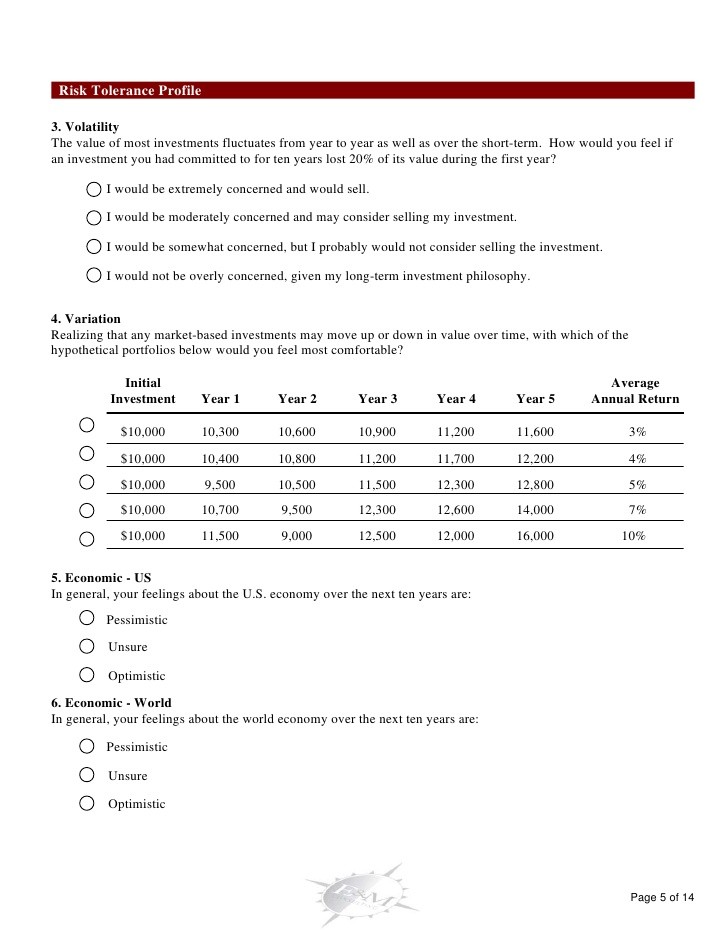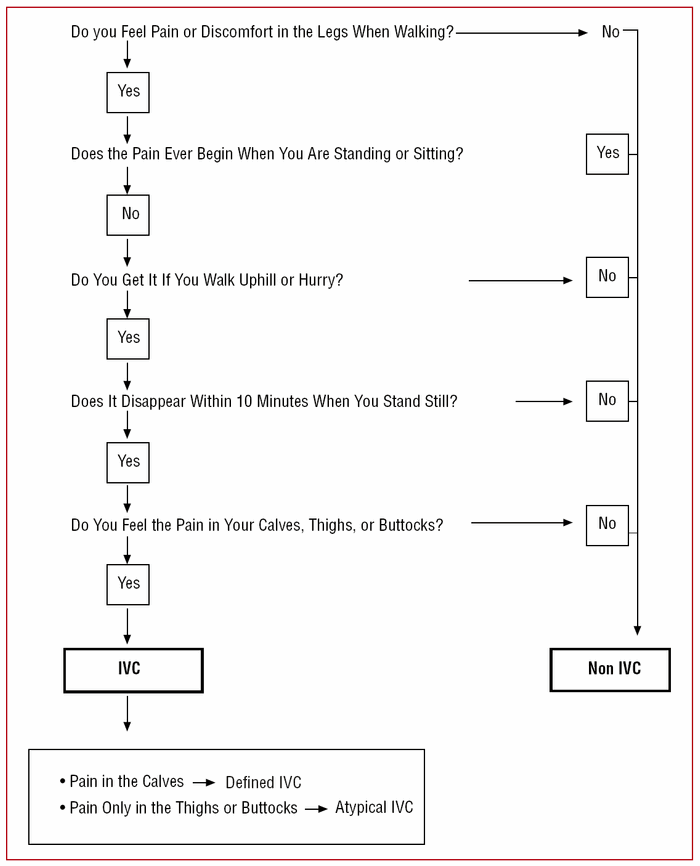The Real Value of Risk Questionnaires
Post on: 8 Июль, 2015 No Comment

The true worth of a risk assessment test goes beyond divining how much a client is willing to lose
Perhaps the best financial planning lesson Ive ever seen was back in 1984 when entrepreneur Ross Perot (who later became an Independent Party presidential candidate) sold the company he founded in 1962, Electronic Data Systems, to General Motors for $2.5 billion in cash. Perot subsequently revealed that he invested his entire $2 billion-plus after-tax gain in a portfolio comprised entirely of triple-tax-free muni bonds, saying: I dont like filing tax returns, and besides, how much money do you need to live on?
I think about Perots portfolio whenever the subject of risk tolerance tests comes up. Ive never been a big fan of these tests for two reasons. For one thing, it seems unlikely that clients sitting in a nice office on a sunny day, happy with their new financial advisor and full of optimism about their financial plan, will be able to accurately assess what theyll be feeling after a 30% drop in their portfolio. (In fact, a couple of years ago, research by John Grable and Sonya Brill at Kansas State University showed that mens risk tolerance mysteriously soars when the financial planner across the desk is an attractive woman. Go figure.)
More importantly, its always seemed to me there is only one rational answer to the question, How much risk do you want to take in your retirement portfolio? Which is: As little as possible to still meet my financial obligations and reach my goals. As it turns out, we old dogs really can learn a new trick or two (if you can get us to stop sticking our heads out of the car window). Case in point: I recently had two enlightening conversations that have brought me around on risk tolerance tests, if you keep in mind that theyre not really about testing risk tolerance.
The first conversation to grab my attention was when Geoff Davey, cofounder and director of FinaMetrica Ltd. in Sydney, said: The standard built around suitability in the United States is the worst in world. Well, maybe behind Canada. A group of academics recently studied the roots of advice that had been deemed unsuitable: More than half had resulted from the use of a risk tolerance test.
Strange talk from a guy who creates risk tolerance tests for a living. He explained: In the 70s and early 80s, advice was given on the basis of what story brokers had to tell about the product they were trying to push. Most clients ended up with eclectic portfolios. Then MPT came along with optimized and efficient portfolios, and created a new question: How did brokers sell each fund? Risk questionnaires were invented to create a story, with no validity at all.
Validity is something Davey takes very seriously. Typically, to create a FinaMetrica risk questionnaire with 25 questions, he starts with about 150 questions and then tests them: His most recent risk test took two years to compile. First, we trial the questions against a population for understandability and answerability, he explained. Anything with a technical term, even bonds, people didnt like. They didnt get it when we quoted potential range of returns in numbers, either. Once we get a set of questions with high usability, we do a statistical analysis to see if questions actually differentiate people: whether they elicit a range of answers or do they tend to fall into one or two groups. Our test sorts clients into seven risk groups, but its not an even distribution: Its like clothing, with more in the middle.
While the methodology is interesting to a nerd like me, so is how Davey intends the results to be used by advisors. Our system turns the whole business from a compliance risk management chore to a relationship-building opportunity, he said. The report provides trigger points for discussions with clients. For instance, we left in an insurance question, even though we think it depends as much on knowledge as risk tolerance. So dont score it, but advisors can use it to start a conversation. According to Davey, his reports help advisors have better conversations with new clients, so the clients become better connected to the advice, and trade-off decisions are better documented. (I knew hed throw the compliance angle in there somewhere.)
However, he also said risk tolerance really isnt the point: The advice process might not even use the tolerance that comes out, he said. If the client says any drop in portfolio value will make them uncomfortable, the advisor will have a conversation and come to a compromise solution, or just lower the risk group. The final question he asks clients is to predict their risk score: If theres a big difference, that leads to another conversation.
While Davey agreed that it is hard for clients to predict their reactions to loss, the conversations that his reports initiate help advisors get a better understanding of clients true feelings and help the clients gain a better understanding of how their portfolio is created to manage risk. His results bear this out: We found during the Great Recession that 95% of our advisors clients didnt bail.
The other conversation that I had took this concept of managing client behavior to the next level. Steve Atkinson is executive vice president and head of advisor relations at Loring Ward, an asset manager with $8.7 billion in AUM from clients of RIAs and independent reps. Working with advisors to help their clients make better investment decisions is a hallmark of Loring Ward, which lists both Meir Statman, renowned professor of behavioral economics at Santa Clara University, and Nobel Laureate Harry Markowitz on its advisory staff and investment committee. According to Atkinson, Loring Wards client risk assessment is a major part of its program.

We believe that you dont solve human behavior: You manage it, Atkinson told me. An advisors biggest value is to manage the clients, not the portfolio. That includes managing portfolios with an eye toward the risk clients are willing to take. The smartest allocation in the world doesnt help much if a client doesnt stay with it.
At Loring Ward, they also use client risk assessments to help start the conversation about risk. Our approach is to let the client know that their advisor hears them and their concerns. Its not about bonds or interest rates; they are afraid they arent going to meet their goals or have enough money. So we teach advisors to create portfolios the client can see are designed around both the risk they are comfortable with and the growth they need to have.
Atkinson believes its all about how an advisor talks to his or her clients. For instance, when advisors ask, How much does this portfolio have to go down before you cant take it anymore? he suggested that advisors keep it real for clients by putting the figures in dollar terms. Percentages dont really mean anything to clients, he said. But if you put it into dollarssay, a $200,000 drop in a $1 million portfoliothat gets their attention, and they are much more likely to give an accurate answer.
Atkinson said that the key to managing clients is to get them to commit to their financial plan and to work with them to stay committed. Thats the advisors job, he explained. When clients ask scared questions, an advisor should let them vent. Then let them know that you hear their concerns: Youre concerned that we may not meet our projections. Then remind them that in their plan, you took into account random events and the risk they were comfortable withand that their portfolio is constructed [through automatic rebalancing] to correct based on circumstances.
In 2008, Loring Wards clients with 60% equity/40% bond allocations saw their portfolios go down 19%. But with their automatic rebalancing in March 2009the bottom of the marketthey rebalanced back into equities and made substantial gains on the way back up. We had net inflows during 08 and 09, Atkinson said.
So I stand corrected. There does seem to be a role for client risk assessments by advisors who are looking to actually advise their clients: to get clients to talk about how they feel about short-term portfolio losses, to create portfolios that clients will be able to live with, and to remind clients that their portfolio was designed with occasional market declines in mind. I still think that how much risk do I need to take? is the key questionbut a portfolio that clients will stick with is a better answer.














